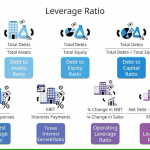The public markets have witnessed a flurry of activity in recent years, with private companies exploring various avenues to make their debut. From the record-setting pace of Fintech IPOs to the Crypto Boom, the financial landscape has been abuzz with innovative ways for organizations to raise capital and go public. Amidst this evolving landscape, three primary routes have emerged as the frontrunners: Initial Public Offerings (IPOs), Direct Listings, and Special Purpose Acquisition Companies (SPACs).
As private companies weigh the pros and cons of each approach, a critical question arises: which path to market delivers the best long-term value for investors? In this comprehensive article, we delve into the intricacies of these three distinct methods, analyzing their respective advantages, drawbacks, and the performance of recent high-profile exits. By the end, you’ll have a clear understanding of the factors to consider when charting the optimal course for your organization’s public debut.
The Enduring Allure of IPOs
Initial Public Offerings (IPOs) remain the traditional and most widely recognized method for private companies to transition into the public domain. This time-honored approach has been a staple of the financial markets since the Dutch East India Company’s landmark IPO in 1602. Over the centuries, IPOs have experienced their fair share of booms and busts, often in tandem with broader stock market cycles.
At the heart of the IPO process is the involvement of investment banks, which serve as underwriters. These financial institutions guide the company through the rigorous regulatory filings, roadshows, and pricing negotiations required to bring the shares to the public market. Typically, the underwriters charge a fee of around 7% of the funds raised, making IPOs a relatively costly endeavor for the issuing company.
However, the expertise and experience of these investment banks are often seen as invaluable, as they leverage their extensive networks and market insights to generate demand and set the appropriate pricing for the shares. This collaborative effort between the company and the underwriters is designed to ensure a successful public debut and a favorable reception from institutional and retail investors alike.
The Advantages of the IPO Path
One of the primary appeals of the IPO route is the potential for significant capital infusion. By tapping into the public markets, companies can access a vast pool of liquidity, enabling them to fund their growth, pursue strategic initiatives, and potentially provide lucrative returns for early investors. The increased visibility and prestige associated with a successful IPO can also enhance a company’s brand recognition and credibility within its industry.
Moreover, the IPO process instills a sense of discipline and transparency within the organization, as the company must adhere to stringent regulatory requirements and disclose extensive financial information. This level of scrutiny and accountability can be viewed as a stamp of approval, signaling the company’s readiness to operate under the scrutiny of public markets.
Navigating the Challenges of IPOs
While the IPO pathway offers numerous benefits, it is not without its challenges. The lengthy and meticulous process, which can take anywhere from 6 months to over a year to complete, can be a significant drain on a company’s resources and management bandwidth. The high costs associated with underwriter fees, legal and accounting expenses, and the extensive regulatory filings can also be a deterrent for some organizations.
Additionally, the IPO process requires companies to disclose sensitive information, such as financial data, intellectual property, and strategic plans, which can be a concern for founders and executives seeking to protect their competitive edge. The potential for underpricing, where the shares are sold at a lower price than their true market value, can also lead to a situation where early investors miss out on significant upside potential.
The Allure of Direct Listings
In recent years, an alternative to the traditional IPO has gained traction: the direct listing. This approach allows private companies to bypass the intermediary role of investment banks and bring their shares directly to the public market. By eliminating the need for underwriters and the associated fees, direct listings offer a more streamlined and cost-effective path to public trading.
The key distinction between direct listings and IPOs lies in the pricing mechanism. In an IPO, the shares are priced by the company and the underwriters based on the demand generated during the roadshow. In a direct listing, the opening trading price is determined solely by market forces, allowing for more transparent and democratized price discovery.
Advantages of the Direct Listing Approach
One of the primary advantages of direct listings is the avoidance of share dilution. Since the company is not issuing new shares, but rather listing existing ones, the ownership structure remains intact, preserving the value for founders, early investors, and employees.
Additionally, direct listings offer enhanced liquidity for shareholders, as they can freely sell their shares on the open market from the first day of trading, without the constraints of lock-up periods typically associated with IPOs.
The absence of underwriters also translates to lower costs for the company, as they can forgo the substantial fees charged by investment banks. This savings can be particularly appealing to well-capitalized organizations that may not require the extensive marketing and distribution support provided by underwriters.
Navigating the Risks of Direct Listings
While direct listings offer a more streamlined and cost-effective path to the public markets, they are not without their own set of risks and challenges. Without the safety net of underwriters, direct listings can be susceptible to greater volatility in their stock price performance, as the market forces solely determine the opening trading price.
Moreover, the lack of an underwriter also means that there is no guarantee of share sales, as the success of the listing relies entirely on the willingness of existing shareholders to sell their stakes. This uncertainty can be a concern for companies seeking a more predictable and controlled public debut.
The absence of the underwriter’s expertise and network can also limit the company’s ability to generate widespread investor interest and demand, potentially leading to a less successful public offering compared to a traditional IPO.
The Rise of SPACs: A Hybrid Approach
The third option for private companies seeking to go public is the Special Purpose Acquisition Company (SPAC), also known as a “blank-check company.” SPACs have been around for many years, but it was only in the latter half of 2020 that they experienced a remarkable surge in popularity, a trend that has continued into the first quarter of 2021.
A SPAC is a publicly traded shell company formed with the sole purpose of acquiring a private company and taking it public. The SPAC’s sponsors, typically experienced investors or industry experts, raise capital through an IPO, with the intention of using these funds to identify and merge with a suitable target company.
The Advantages of the SPAC Route
One of the key benefits of the SPAC approach is the speed and efficiency of the process. The timeline for a SPAC merger is typically much shorter than a traditional IPO, often taking between 3 to 6 months to complete, compared to the 12-18 months typically required for an IPO.
Additionally, the SPAC structure allows for upfront price discovery, as the target company’s valuation is negotiated and agreed upon with the SPAC sponsors before the merger is finalized. This can be particularly advantageous in volatile market conditions, where the traditional IPO pricing may be subject to greater uncertainty.
SPACs also offer the potential to raise additional capital through mechanisms such as PIPE (Private Investment in Public Equity) financing, which can provide a financial cushion to ensure the successful completion of the merger, even in the face of potential shareholder redemptions.
Navigating the Risks of the SPAC Approach
While the SPAC route presents some attractive features, it is not without its own set of challenges and risks. One of the primary concerns is the potential for misaligned incentives between the SPAC sponsors and the public shareholders. The SPAC sponsors typically hold a significant equity stake, often around 20%, which can lead to a situation where their interests may not fully align with those of the public investors.
Additionally, the compressed timeline for public company readiness can place a significant burden on the target company, as they must rapidly adapt to the regulatory requirements and establish the necessary public company infrastructure, such as investor relations and internal controls.
The lighter regulatory requirements for SPACs, compared to traditional IPOs, have also raised concerns about the quality of due diligence and the potential for overvaluation, which can ultimately lead to disappointment for public investors.
Comparing the Performance of Recent Exits
To gain a deeper understanding of the relative performance of these three public market entry methods, let’s examine the outcomes of some recent high-profile exits.
IPO Successes and Challenges
In 2023, the US stock market witnessed 154 IPOs, with 39% of them delivering positive returns. Among the top-performing IPOs were companies in the industrial manufacturing, technology, media and telecom, and consumer, retail, and travel sectors. These successful IPOs demonstrated the potential for well-executed public debuts to generate substantial value for investors.

However, the IPO market has also experienced its fair share of challenges, with a 15% drop in the number of IPOs in 2023 compared to the previous year, and an 85% plunge from the record-breaking 1,035 IPOs in 2021. This volatility underscores the sensitivity of the public markets to broader economic conditions and investor sentiment.
The Mixed Fortunes of Direct Listings
Direct listings, while offering a more streamlined path to the public markets, have had a more mixed performance. Of the 18 companies that have gone public via direct listing since 2018, only a handful have witnessed significant returns on their first day of trading, with the majority experiencing extreme volatility and collapsing share prices in the long run.
A prime example is reAlpha Tech, which went public through a direct listing in late 2023. The company’s shares soared on the first day, reaching an intermediate high of $575, only to plummet 75% to $100 by the end of the second day. Currently, reAlpha Tech’s stock is trading at just over $1 per share, a far cry from its initial public debut.
The Uneven Track Record of SPAC Mergers
The SPAC boom of 2020 and 2021 saw over 260 de-SPAC transactions, with 2021 being the peak year with 199 deals. However, the market sentiment has since shifted, and 2023 saw a significant drop in SPAC activity, with only 98 deals registered by the top exchanges.
The performance of SPAC-backed companies has been equally uneven, with some high-profile failures and bankruptcies. For instance, Grab Holdings, the target of the largest de-SPAC transaction in 2021, has seen its stock price plummet by more than 77% since the merger announcement, trading at just $3 by the end of 2023.
Similarly, VinFast Auto Ltd., the largest de-SPAC acquisition of 2023, saw its stock price surge to $82.35 in late August 2023 but has since dropped by 49% to $5.28 per share.
Navigating the Evolving Landscape
As private companies weigh their options for going public, it’s clear that the landscape has become increasingly complex, with each path to the public markets offering its own unique set of advantages and drawbacks.
The Enduring Appeal of IPOs
Despite the challenges and the recent volatility in the IPO market, this time-honored approach remains a popular choice for many companies seeking to access the public markets. The potential for significant capital infusion, enhanced visibility, and the stamp of approval that comes with a successful IPO continue to make it an attractive option for organizations looking to fund their growth and provide lucrative returns for their investors.
The Allure of Direct Listings
For well-capitalized companies seeking a more streamlined and cost-effective path to the public markets, direct listings have emerged as a viable alternative. The avoidance of share dilution, enhanced liquidity for shareholders, and lower costs associated with the process make direct listings an appealing choice for organizations that prioritize preserving their ownership structure and maintaining greater control over the pricing and timing of their public debut.
The Evolving Role of SPACs
While the SPAC boom has cooled in recent years, this hybrid approach to going public continues to play a role in the evolving landscape of capital formation. The speed and efficiency of the SPAC merger process, as well as the potential to raise additional capital, have made it an attractive option for some companies. However, the concerns around misaligned incentives, lighter regulatory requirements, and the uneven performance of SPAC-backed companies have led to increased scrutiny and a more cautious approach from both investors and regulators.
Long-term value considerations for investors
When it comes to evaluating the various paths to the public markets, investors must consider not just the short-term potential for share price appreciation, but also the long-term value creation potential of the company. This requires a deeper examination of the company’s fundamentals, growth prospects, and the potential impact of its chosen path to the public markets.
In the case of IPOs, investors should carefully assess the company’s business model, competitive positioning, and growth strategy. While the initial public offering may generate significant investor excitement and a potential share price pop, the long-term success of the company will ultimately depend on its ability to execute on its strategic vision and deliver sustainable financial performance.
For direct listings, investors must consider the potential trade-offs between the cost savings and flexibility of this approach and the potential challenges in building a stable shareholder base and attracting institutional investors. Additionally, the lack of a traditional IPO process may make it more difficult for investors to assess the company’s valuation and long-term prospects.
With SPACs, investors must be particularly vigilant in evaluating the alignment of interests between the SPAC sponsors and the target company, as well as the long-term growth potential of the combined entity. The speed and flexibility of the SPAC process can be attractive, but investors should also be mindful of the potential risks, such as conflicts of interest and market volatility.
Conclusion: Choosing the Right Path for Your Organization
As private companies navigate the complex decision of how to go public, it’s clear that there is no one-size-fits-all solution. The choice between an IPO, a direct listing, or a SPAC merger will depend on a variety of factors, including the company’s financial needs, growth stage, ownership structure, and the prevailing market conditions.
Ultimately, the path that delivers the best long-term value for investors will be the one that aligns most closely with the company’s strategic objectives, while also providing the necessary capital, liquidity, and market exposure to fuel its future success. By carefully weighing the pros and cons of each approach and staying attuned to the evolving trends in the public markets, private companies can make an informed decision that maximizes the long-term value for all stakeholders.






